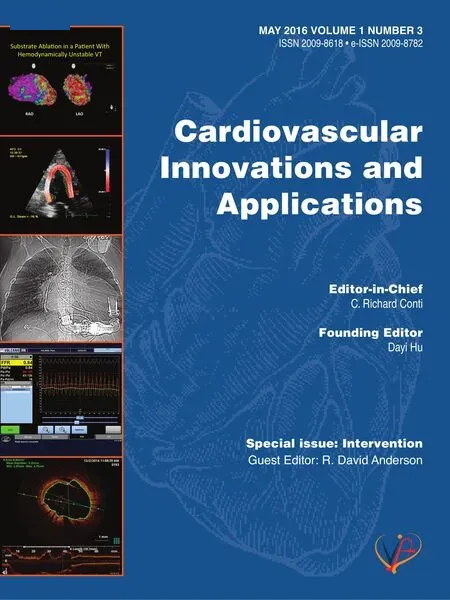NSTEMI or STEMI: A Myocardial Infarction is an Infarction Regardless of the ECG Changes at Presentation
C. Richard Conti, MD, MACC
Significance of ECG Changes in Acute Myocardial Infarction
ST segment elevation is considered by most as a sign of an occluded coronary artery and myocardial ischemia. Coronary artery occlusion usually is the cause of the acute infarction in the patient with that type of ECG. Patients with acute myocardial infarction who do not show ST segment elevation yet leak troponin, still have a myocardial infarction.
Some Assumptions
Since patients with ST segment elevation or non ST segment elevation have had an acute myocardial infarction, why should we assume that the patient without ST segment elevation did not occlude an epicardial artery?
Despite the absence of ST segment elevation,these patients still may have a coronary occlusion associated with collateral blood flow to the distal circulation of the infarct related artery. Alternatively the patient could have embolized to the microcirculation from a disrupted plaque or a plaque that had occlusive thrombus attached.
It is also possible that the NSTEMI patient, who is now leaking troponin, may be doing so after spontaneous opening of the epicardial artery in question, secondary to their own Tissue Plasminogen activator. Some of these patients will be left with a high grade stenosis of the infarct related coronary artery.
When did the Myocardial Infarction Start?
In patients presenting with NSTEMI, it should be considered a possibility that the epicardial artery in question could have been occluded prior to the first ECG taken. Thus, the patient might have demonstrated ST segment elevation had the patient been evaluated with ECG at an earlier time. This patient could now be categorized as a MSTEMI (missed STEMI).
Should Urgent PCI be Considered?
Some will argue that if the epicardial vessel is patent there is no need for emergent PCI. I will accept that argument but only if the vessel is widely patent as it would be after PCI/stent (that can only be determined at coronary angiography). I will not accept the argument about patency, if the vessel (probably with plaque disruption) remains patent but nearly occluded.
Relationship of ECG Changes to Area of Infarction
Another clinical issue that must be considered by first responders, relates to an area of the heart that is infarcting but may not demonstrate changes on the first 12 lead ECG (even if vessels are occluded).This is the lateral wall of the left ventricle, which usually is supplied by the obtuse marginal branches of the Circumflex coronary artery. In this instance the initial 12 lead ECG may be normal despite a good story and Troponin elevation. ECG leads,V7-9 may be required to detect any ECG abnormalities, such as ST segment elevation.
Risk Associated with Myocardial Infarction
I am of the opinion that all patients with acute myocardial infarction (with or without ST segment elevation) are at higher risk than those without an acute myocardial infarction. I believe that all patients with acute myocardial infarction should be considered for urgent coronary angiography. If the vessel in question (infarct related artery) is widely patent, leave it alone and consider microcirculatory dysfunction. If it is not widely patent, make it so with PCI/Stent.
Myocardial Infarction and LBBB
Finally, it is common practice to emergently take patients with recent onset LBBB, Troponin leak and good story to the cardiac catherization laboratory for coronary angiography and possible PCI/Stent. This is done because new onset of LBBB in this setting is considered a “STEMI Equivalent”. This is done despite not having a clue as to the coronary pathology. Why not do the same for patients with a good story for a myocardial infarction and troponin leak, not related to CKD or some other reason, who do not have ST elevation on the ECG?
The Literature and My Conclusion
Some have the impression that NSTEMI is benign compared to STEMI and thus need not be considered for urgent revascularization.
The message I am getting from the literature is that there is insufficient evidence to accept or reject the emergent use of Coronary angiography and subsequent PCI/Stent in the NSTEMI patient. I guess my message is that if we do no harm, (with urgent coronary angiography) why not find out what is going on in the coronary circulation? We might be surprised in patients in whom the diagnosis of vessel occlusion was missed.
 Cardiovascular Innovations and Applications2016年2期
Cardiovascular Innovations and Applications2016年2期
- Cardiovascular Innovations and Applications的其它文章
- Transient Pulmonary Atelectasis after Ketamine Sedation during Cardiac Catheterization in Spontaneously Breathing Children with Congenital Heart Disease
- Identification and Management of Iatrogenic Aortocoronary Dissection
- Cardiovascular Abnormalities Among Patients with Spontaneous Subarachnoid Hemorrhage.A Single Center Experience
- Coronary Artery Chronic Total Occlusion
- Carotid Artery Stenting: 2016 and Beyond
- The Transradial Approach for Cardiac Catheterization and Percutaneous Coronary Intervention: A Review
